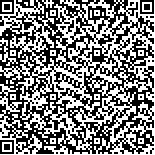下载中心
优秀审稿专家
优秀论文
相关链接
摘要

为了实现更大尺度上的陆表生态变化检测,一种基于综合生态指数的动态变化检测方法用于不同时期卫星影像变化信息的提取。本文以东北地区的松嫩平原地表植被覆盖类型作为主要研究对象,2006年和2018年作为变化检测研究的标准年,陆地资源卫星影像数据作为实验数据源。动态变化的主要检测内容划分为年内变化和年际变化,最大差值算法计算影像数据的年内最大变化差异,同时动态比率算法计算年际动态变化。方法的实现过程如下,选择3个主要生态指数(水体指数、植被指数和土壤指数)用于计算年内最大差异和年际动态比率。然后,采用主成分分析法提取年内最大差异和年际动态比率的第一主成分,主要研究内容包括年内变化的显著性生态评价和年际变化方向、变换类型的分析与评价以及方法精度的验证。最终结果表明:(1)动态比率算法用于研究区年际变化检测,具有更高的变化检测精度,总体精度为93.80%,Kappa系数为0.876。(2)年内生态指数变化的最大差值用于定量衡量研究区年内变化检测。其中,第一主成分保留了83.04%的变化信息。同时,植被和水体对研究区的陆表生态变化有正方向的贡献。土壤裸露程度对陆表生态变化有负方向贡献。动态比率变化检测方法不需要设定适合的、动态的变化阈值,更便于大范围高效更新土地覆被类型。
The dynamic variation of the ecological environment, as the material basis of human breeding, directly affects people’s quality of life. The terrestrial ecosystem continuously evolves with the developing human society. The rapid and accurate extraction of land-cover change information is conducive to ecological environment protection, the scientific management of natural resources, and the maintaining the human-earth relationship.The objective of this paper is to determine how to construct the dynamic ratio method with the unified threshold to quantitatively measure the change direction, the changed region, and the change type of wetland.On the basis of remote sensing ecological index (i.e., MNDWI, NDVI, and NDSI), the change detection method was proposed to extract the max-difference in the growing season (2018) and the inter-annual dynamic change rate, respectively. The Landsat images data in 2006 and 2018 were used. The main goal is the annual significant assessment of ecological change in land-cover, the determination of the ecological change direction of land-cover, and the analysis of the transformation types of land cover. Principal component analysis was used to extract the first principal component of the monthly max-difference and inter-annual dynamic change rate. Finally, 5626 samples were collected by using visual interpretation. Accuracy assessment was subsequently conducted on the result of the annual and inter-annual change detection.(1) The dynamic ratio method is suitable for the inter-annual change detection in the study area and has higher change detection accuracy and greater stability than single-index (or band) change detection. The overall accuracy of the method is 93.8%, and the Kappa coefficient is 0.876. (2) The monthly max-difference of the ecological indexes (i.e., MNDWI, NDVI, and NDSI) was used to quantitatively measure the annual ecological variation in the study area. Finally, the first principal component retained 83.04% change information. Moreover, land vegetation and water have a positive contribution to the surface ecological change in the study area. The normalized difference soil index contributed negative effects to land ecological change. The dynamic change detection method does not need to set the dynamic threshold, and is more suitable for the efficient updating of land-cover types on a global scale.The quick extracting method of change information with single-phase remote sensing image between two different times enriches remote sensing monitoring technology. Such enhancement is salient especially in the evaluation of land surface ecological factors. It also provides updated data with support for natural resource inventory at the global scale.

